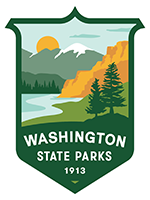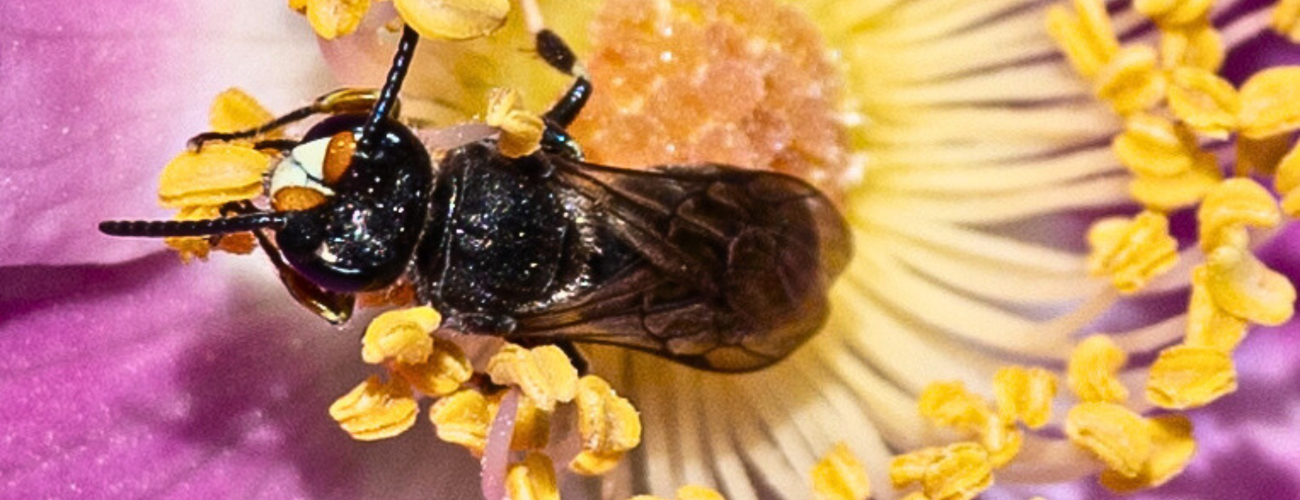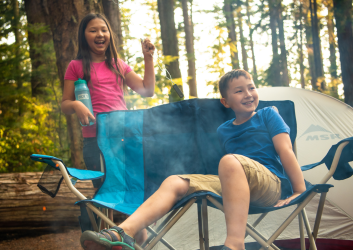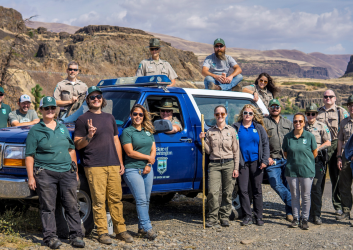Look at that face! Cinquefoil Masked Bee discoveries in state park
While the species range indicates widespread distribution across U.S. and Canada, it may appear more commonly in western states and mountainous regions. Previously no Hylaeus basalis had been found and recorded in the Olympic Peninsula region. Data gaps exist for many Washington bee species, possibly more so in rural areas. Prior to these iNaturalist observations, the bee may have been first photographed in Washington in 2011 (BugGuide, Ferry County).
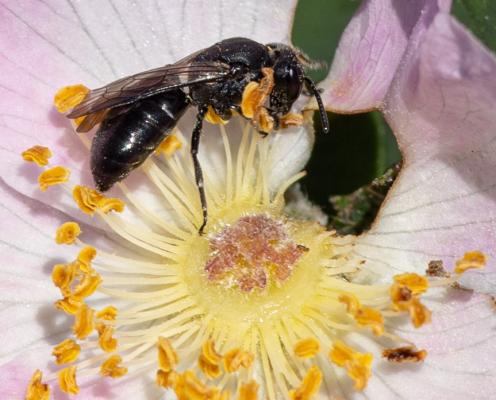
The genus Hylaeus, commonly referred to as Masked Bees, are members of the Colletidae family of bees known for lining their nests with a cellophane-like secretion that gives them structure and water proofing qualities. Hyleaus do not have external structures to carry pollen like most bees instead they carry pollen internally in their crop. Where the female face of H. basalis is completely black, males have a yellow clypeus and the most distinctive enlarged scape (first antennal segment) which is a light orange/yellow color. The name Hylaeus comes from the Greek word that means “of the woods” or “living in the woods” which likely refers to their preference for nesting in wood, hollow stems or twigs. A solitary species, Hylaeus do not excavate their own nests, instead they nest in pre-existing holes in wood - created by beetles, nails, and possibly other bees.
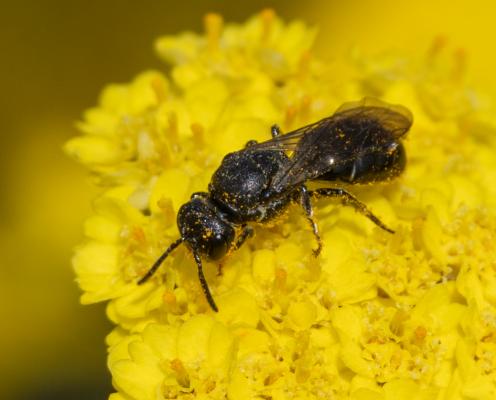
Following the first Washington iNaturalist observation, two additional observations were made in eastern Jefferson County and verified by John Ascher in May and June. They each occurred in separate shoreline habitats in Port Townsend. I observed both female and male bees on May 30th visiting native Rosa Nutkana (Nootka Rose) which was growing in hedgerows in a natural coastal strand habitat.
Then on May 31, I observed a female visiting what I suspect to be ornamental yarrow, Achillea x 'Moonshine', planted along a beach walking path at Hudson Point. Hylaeus are generalist foragers with preferences for floral hosts in the Rose, Aster and Mustard families for which they have adapted. Cinquefoil (Potentilla species) are in the Rose family and both Nootka Rose and Common Yarrow are present in these coastal areas. An abundance of driftwood and logs with existing beetle burrows in these habitats supports their preference for woodland nesting landscapes.
I am eager to inspect the dead logs more carefully this May and hope to document their nesting activity.
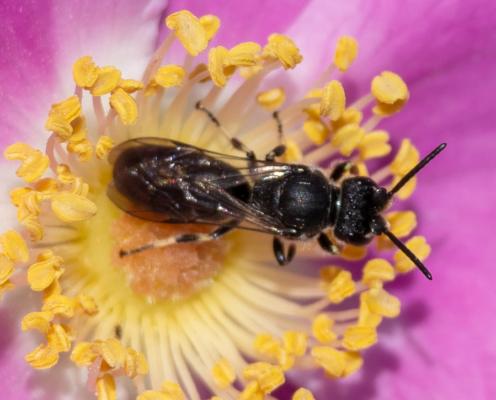
Additionally, Hylaeus basalis was collected in Island County on Whidbey Island for the WA Bee Atlas on May 30; and by three other iNaturalist observers in Okanogan, King and Chelan Counties June through July. For Washington, the number of verified iNaturalist observations for this species went from zero to twelve in 2024 with Washington now leading in iNaturalist observations of this species in the US. This 2024 number may increase as more bees collected by the WA Bee Atlas are added to iNaturalist.
It was a very good year in Washington for the Cinquefoil Masked Bee.
The power of Citizen Science - it takes a team!
Volunteer efforts through iNaturalist and the WA Bee Atlas are helping to fill in missing distribution data, one species at a time, especially in these less populated natural areas.
Want to join the bee-nanza?
With support from the Washington Native Bee Society, Kris is volunteering with the Friends of Fort Flagler by offering two engaging events for the community:
- May 14, 2025: Native Bees of the Olympic Peninsula & Their Nesting Habitats
- June 7, 2025: Native Bee Habitat Walk, led by Kris Ethington and other Washington Native Bee Society leaders

About the author
By Kris Ethington, an active member of the Washington Native Bee Society who regularly conducts photographic native bee surveys throughout the Olympic Peninsula where she lives while participating in citizen science through iNaturalist.org.
Kris Ethington is a citizen scientist, photographer, and dedicated advocate for native pollinators. Her journey began with butterfly gardening in Southern California where she became involved in monarch parasite and migration studies. After designing and re-planting her landscape with mostly native plants, she became a garden naturalist by photographing plant/pollinator interactions; documenting her observations through iNaturalist.org; and serving as a garden ambassador for the California Native Plant Society. After relocating to Port Townsend in 2021, she turned her focus to Washington’s native bees, conducting extensive surveys and contributing to conservation efforts through the Washington Native Bee Society. This year, she will share insights into the diverse bee species of the Olympic Peninsula, including lesser-known pollinators discovered here in Washington State Parks.
This blog was originally published Feb. 19, 2025 in the Washington Native Bee Society Blog.
Originally published February 24, 2025
